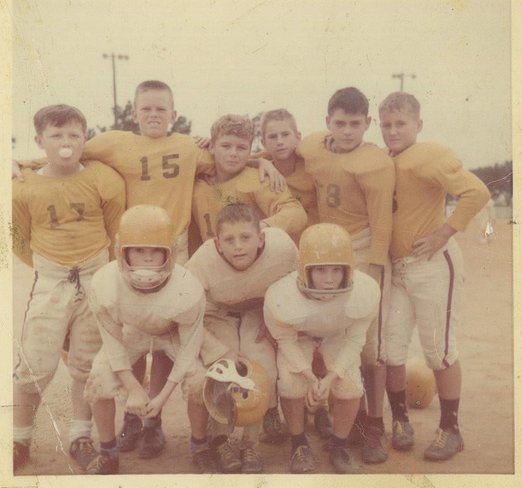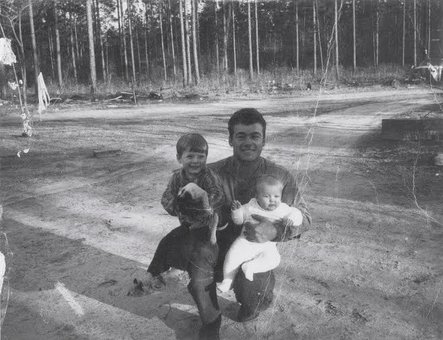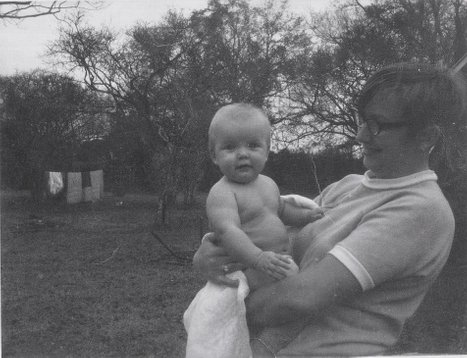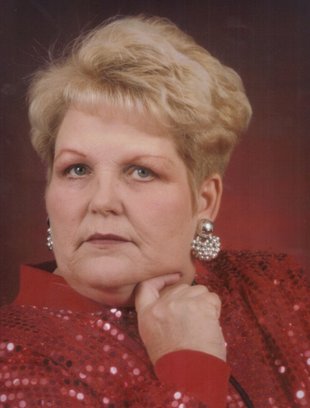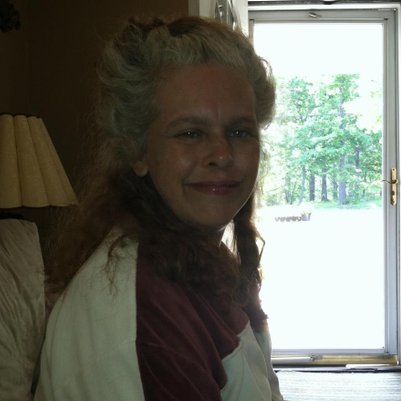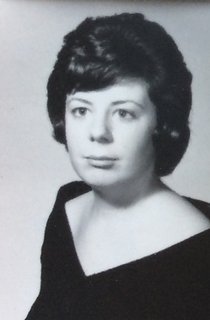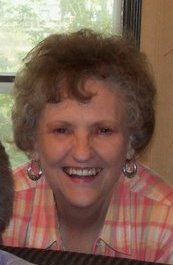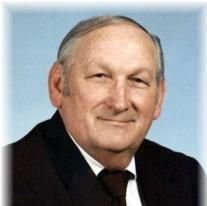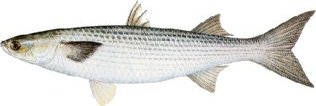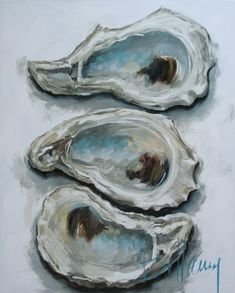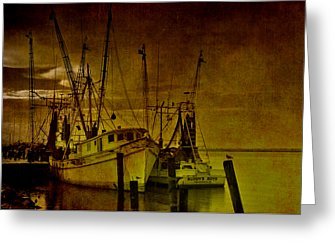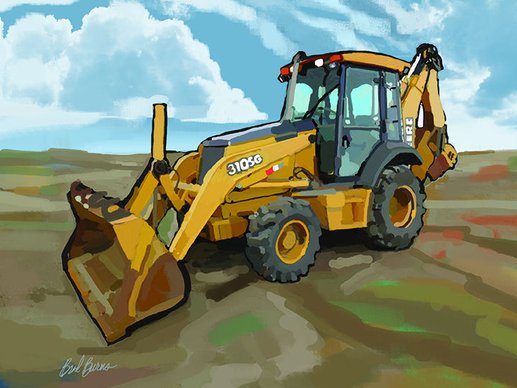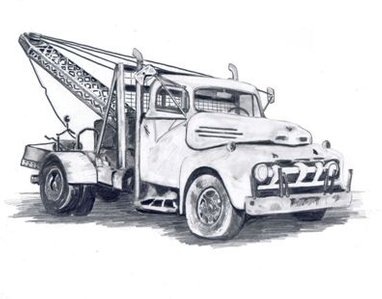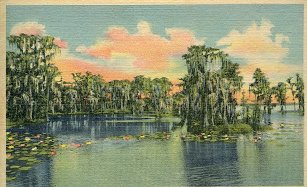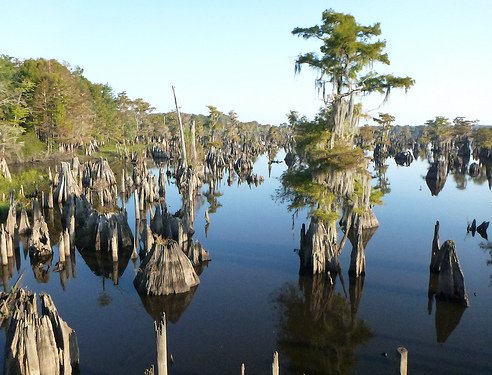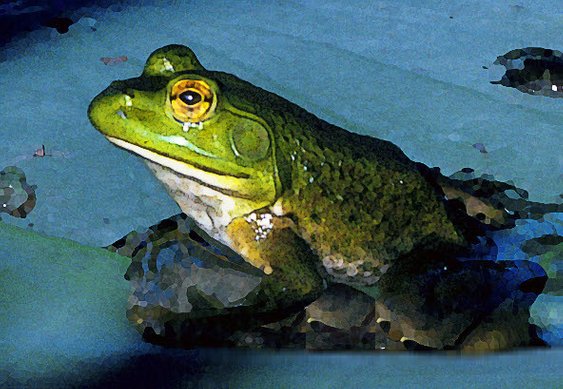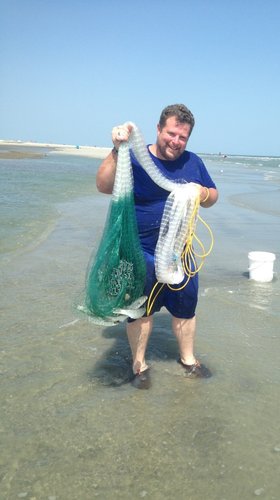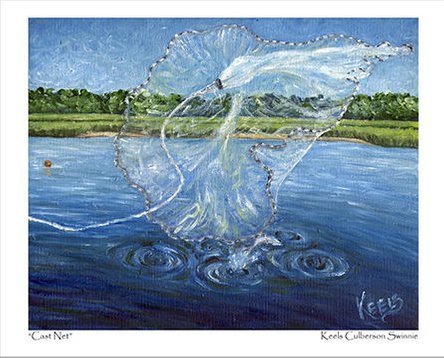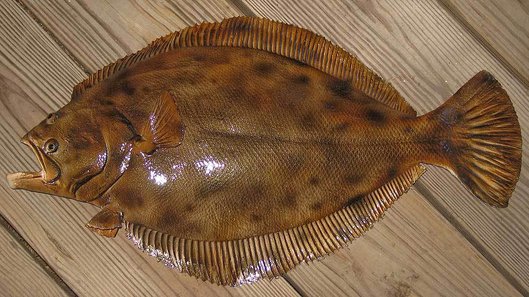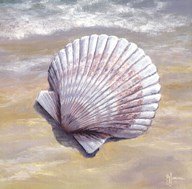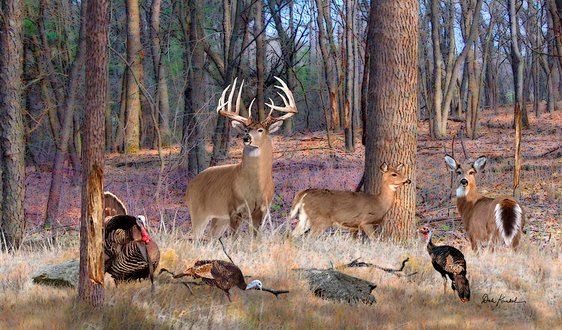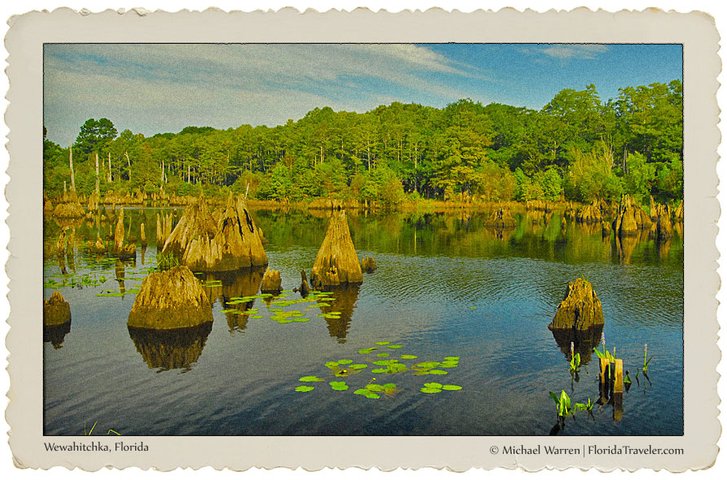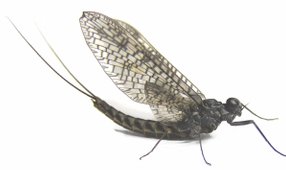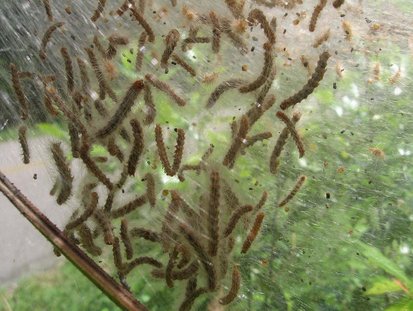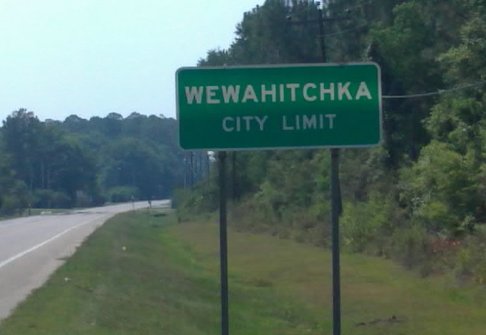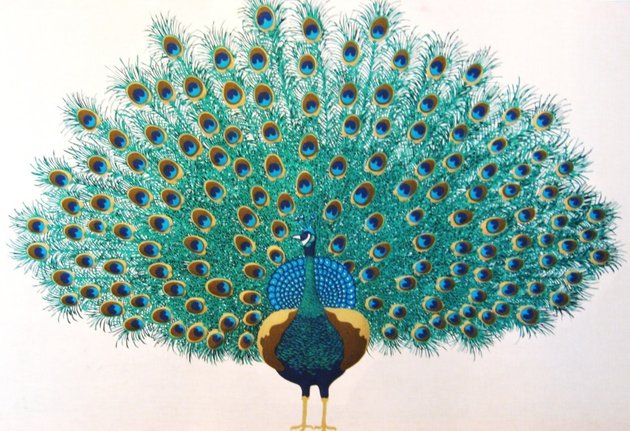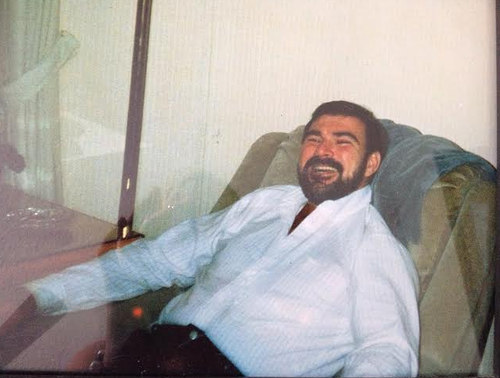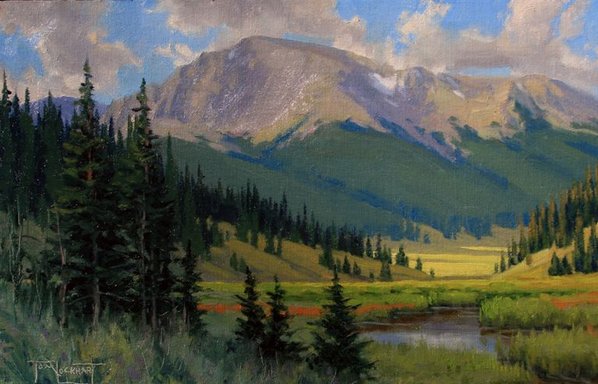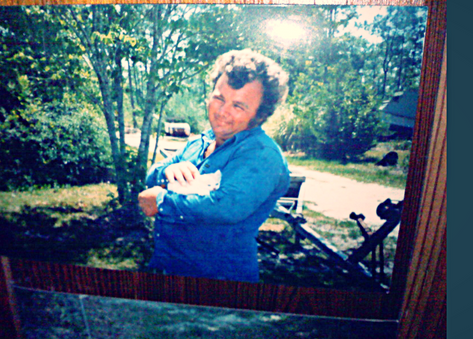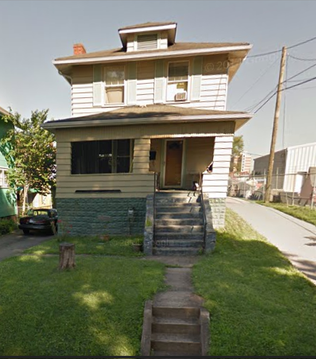Ervin Glen Forehand
Wewahitchka, Florida
Ervin Glen Forehand
Born: April 12, 1947 Died: Mar 4, 1991
First live birth of Ruel Ervin Forehand (1913-1994) & Dorothy Louise Redd Forehand (1927-1987).
Ervin & Dorothy had one son prior to Glen; however, he was a stillborn infant. Infant Forehand is buried in Kinard, Florida (Cypress Creek Cemetery). His grave site is unmarked; however, family informants (siblings) stated that he is buried next to the Pitt’s Family plots Liddie Pitts (Mother of Doll Ona Pitts Forehand).
Liddie Pitts 1868-1935
Ervin Glen was born in Wewahitchka Florida in a small white house that was located on Catalpa St. on the way to T.L. James Park (521 Old Dairy Farm Rd. Wewahitchka, Fl). Glen use to tell me (Steve Forehand) on several occasions as we passed the dilapidated home that he was born there in 1947…with a midwife in attendance.
Part of Glen’s childhood was in Kinard, Florida. Glen enjoyed fishing as a youth and shared with me once that he use to fish in a little creek near Cypress Creek Church. Later the family moved to Millville Community in Bay County Florida.
The Forehand family had moved to Honeyville in Gulf County Florida by 1963 when Glen was around 16 years old.
Glen is mentioned in the Star Newspaper on May 16, 1963 “Discus Throw: Glen Forehand, Wewa first and his brother Ira came in second in the 75 Yard Dash.”
Glen and Linda Sharon Taunton
•Ervin G. Forehand Married Linda Sharon Taunton April 1965
•Linda Taunton Forehand filed for divorce July 10, 1969 (approximately 4 years of marriage)
•Children: Christopher Glen, Caressa Dominque (Linda remarried Burt Chan / both children were adopted by Mr. Chan)
Rutherford Middle School c. 1957
Glen, Christopher, & Kere Linda Taunton Forehand & Kere
Christopher Glen, Steven Glen, and Kere
These are 3 of Glen's children
Taken at Robert's Cemetery at Glens Funeral
Peggy Louise Knight
Candace Marie Forehand
Glen and Peggy Louise Knight
•Glen Married Peggy Louise Knight around 1970
•Glen Divorced Peggy Owens Freeman APR 28, 1971.
Peggy Louise Knight Freeman died June 30, 2010 in Lancaster, SC.
•Child: Candace Marie Forehand
Glen and Sue Ann De Abreu
•Glen Married Sue Ann De Abreu September 20, 1975
•Glen Divorced Sue Ann De Abreu Forehand MAY 25, 1989
•One Child: Steven Glen Forehand
Steven Glen Forehand
Steve Age about 3 in Jesup, GA
Sue Ann Abreu C. 1965
Glen and Patricia Ann Barnes
•Glen married Patricia Ann Barnes Dead Lakes State Park: JUN 17, 1989
•Patricia Ann Barnes is a widower on MAR 15, 1991
Patricia Forehand
Glen lifelong career was as a professional welder through his membership in the brotherhood of Boilermakers Local 199. I remember as a young boy going to the Boilermakers Office, Panama City, Florida, when father was looking for his next welding job. Glen and Harold Creel were very good friends and I remember several occasions they would just sit and talk shop at the Boilermakers Union.
Harold M. Creel (1937 - 2010)
Harold was a member of the International Brotherhood of Boilermakers in Local 111, Panama City, where he served as assistant business manager and elected district business manager executive secretary and treasurer of the following locals: Local 108, Birmingham, Ala.; Local 109, Mobile, Ala.; Local 111, Panama City, Fla.; Local 112, Mobile, Ala.; and Local 199, Jacksonville, Fla. - See more at:
http://www.legacy.com/obituaries/newsherald/obituary.aspx?n=harold-m-creel&pid=144050418#sthash.3dg7WrPH.dpuf
Glen was an industrial individual that was always seeking different ventures. I remember many of Glen’s Occupational pursuits due to the fact that I was there for many of these adventures.
One job that mirrored his Boliermaker heritage was as:
An Independent Welder for pulpwood trailers and other metal work jobs.
Seafood Harvester & Seafood Business
Glen owned and operated at different times during his seafood harvesting endeavors:
•Over 200 yards of gillnets with an aluminum launch boat
One rememberable trip Glen and I went on with some friends was to St. Joseph Bay. We had a 12 foot long aluminum boat that was retrofitted to accommodate a large gillnet. The net was loaded in the middle of the boat stack in layers that would allow the net to feed off the back as we pulled it through the bay. Glen had placed a heavy canvas material over the back to the boat to prevent the webbing from snagging on the boat’s rivets.
On this occasion we spotted a large disturbance in one of the bends along the bay closest to Cape San Blas. We quickly anchored the end of the gillnet to the shore and ran the boat around the cove. Once the net was in the water we started gather the net toward the shore. It did not take long to realize that we had caught a whole school of fish; however, it was not the mullet we were seeking. The net was filled with about 200 pounds of salt water catfish. These of course were considered “trash” fish and a true nightmare to extract from the net. We probably spent the rest of the trip trying to remove the cats from the net…which was made very difficult due to the fact that they were slick and had locked their large spiny fins out in a fixed position which tangled beyond hope. This was the first strike of the day and taught us to be more vigilant when it came to identifying fish species prior to wrapping the gillnet around the school.
We would often go to St. Joe Bay in the summer and especially in the fall when the mullet were full of roe. These trips were always exciting and we would often circle sharks and large stingrays that would rip and drag the net into deeper water. Most of the strikes would be in about 3 to 4 foot of water and on good trips we would fill four of five large igloo coolers with mullet. Glen would often take these fish and sell them from a truck he had designed to petal seafood to Wewahitchkans and folks in Blountstown. Glen also built a large icehouse cooler with cinderblocks and foam to store and keeps seafood fresh. The block building is still standing in Honeyville on the old family property.
One interesting project father tried one time was to “salt” about 100 pounds of mullet in an old freezer chest unit. We had never tried this form of curing fish before and it was a total experiment. Many of the old timers in the area loved to eat salted mullet…usually dipping it in cane syrup. Well, I remember dad making sure that there was a functioning drain plug in the unit and he proceeded to place a layer of rock salt, then a layer of “butterfly” fillet mullet. This process was done over and over until the icebox was full of mullet and rock salt. After about a month we realized that the experiment was a total failure…instead of curing and cooking they rotted. The box smelled like dead rotten fish and the entire batch was ruined…to this day I still do not know what salted mullet taste like and I am fine with that fact. I suppose that what might have happened was that the drain became clogged and lots of liquid started collecting in the bottom of the icebox…causing its contents to spoil.
•Around a 24 foot long fishing boat he used to harvest blue crabs out of East Bay.
Glen had over 300 crab traps that I and Jason Smiley would assist Glen on occasion check the crab traps. When the crabs were in the height of their jubilee…we would collect over 300 pounds of these crustaceans.
East Bay was the location that Glen decided to maintain his 300 plus crab traps. I became very good at making crab traps from black vinyl coated wire mesh. This was truly one of my least favorite Glen projects. We were very successful at catching large amount of blue crabs; however, the job was very difficult. We had a large metal hook that was used to snag the ropes that were suspended in the water by a color coded Styrofoam buoy. Once you had the rope you had to pull the crab trap quickly up from the bottom as the boat was moving and rocking in the bay. These crab traps usually were covered in a puff mud that smelled foul and was very slippery like grease. I often work gloves and had to open the door which was held in place by a large rubber bungee cord. Once the door was open you had to shake, shake, and shake the trap to remove the stubborn crabs. The worst part of this process was to remove the old bait and add new fresh bait. Glen had a connection at Rich’s IGA that supplied him with meat cuttings…which was mostly beef fat and on occasion out of date chicken. This meat mixture would sit in the warm water about three days and smell putrid. After dumping and filling 300 traps in a day…you would smell like rotten meat and puff mud. These crabs were dumped into large wooden slat boxes and the contents sold to several seafood markets. Toward the end of this venture, Glen was successfully sending box crab via airplane up north to a buyer for a restaurant.
One funny moment that I shared with Jason Smiley, my childhood friend, was a day of crabbing. We had successfully worked all the crab traps and were finished for the day. Dad stopped by Rich’s IGA to get some snacks and drinks. There was a line of customers and only one cashier while we waited patiently in the line. We notice that people kept sniffing and looking around with grimaced faces. We soon realized that they smelled the perfume from the bait that we had handled all day…no matter how much you washed your hands…the rancid smell of decay was a strong odor that lingered.
•Oyster Boat harbored at Apalachicola Florida
My favorite memory of dad’s career as an oysterman was at the time that involved a slip and fall and discussion of sharks. Apalachicola Bay is very muddy and you can hardly see you hand just a few inches under the surface of the bay. Many of the oyster beds were 4 to 6 foot deep and embedded in large beds that clung together and were anchored in puff mud. This puff mud is black as coal and very slick in comparison to grease. The other element of this slick black mud was the odor of decaying muck. Many times while dad was using the oyster tongs to haul the shellfish to the culling board…this mud would spill out all over the boat. One preventive measure many oystermen would do to in order to minimize slipping hazard was to cut sand into the marine paint that was layered along the walk ways around the boat. Even with this textured paint the rubber boots would slide if a chunk of the goop became wedged between the oysterman’s footing and the deck of the boat.
Father actually had camper parked in East Point and spent many months during the winter oystering around Apalachicola Bay. I would help father cull the oysters, which involved knocking clams and smaller shells off oysters with a culling iron. This was a messy job because mud and busted muscle (clams) shells would splatter in your face and all over your shirt…along with lots of the puff mud. Sometimes dad would let me fish and goof off to pass the day by. One morning in particular we had been discussing sharks and shark attracts in the muddy water. This was an intense conversation that left me partially terrified of the murky water and what lied beneath. The preferred anchor many oystermen used was a homemade anchor made out of a car’s crankshaft. These made perfect anchors and could be replaced cheaply if they were lost in the bay. One disadvantage of using these homemade anchors was all the grooves and crevices of the crankshaft would catch and hold lots of puff mud that would drip onto the boat. This mud would dry and crackle in the day’s light; however, one drop of water would reconstitute this dehydrated mud back into a slick goop. I was walking around toward the front of the boat while dad busily tonged for oysters near the back of the boat. My rubber boots were dripping wet as were my pants from all the water that drained into the boat from the shells and culling board. Once my wet dripping boots/pants hit this dried mud…it rehydrated and caused me to slip and yes fall into Apalachicola Bay. Dad later said he heard a scream and loud thud followed by an immediate splash. He instantly knew that I had fallen off the boat. I had rubber boots on and thought I was going to drown. I kept screaming and splashing around and dad kept saying Steve…stand up! Steve stand up! He said it very loud and forceful and I extended my legs and soon found out that there was an oyster bed beneath my feet. The water was probably 3.5 foot deep. I smiled and started laughing at my blunder and dad was laughing too now that I had realized I was not going to drown. Then I slowly moved toward the oyster boat. I finally reached the boat and reached my little hands up on the side of the boat to try pull myself up. Dad said all of a sudden my face became panicked and I snatch around very quickly behind me…I had a total recall of the shark conversation that morning and feared that I was going to be eaten by a shark. I started scratching and climbing crazily at the boat as dad tried to pull me back into the boat. Dad always loved to tell his friends this story about how I snatch my head back looking for the shark and my reaction to my predicament.
•Shrimp Boat
Dad converted a 20 foot fishing boat into a shrimp boat. Glen would often shrimp around Apalachicola Bay. Glen had made several friends along the harbor and soon learned the ins and outs of shrimping for a living. One of his friends Jean took dad on several trips into Apalachicola Bay at night to learn how to shrimp like the professionals. Dad learned many tricks of the trade and invested into a net, boat and lots of igloo coolers. I loved to go with dad on these trips because it was neat to see all the different sea critters the nets would catch. This was before the introduction of the “turtle excluder” so you would catch anything that could not outswim the shrimp boat. One neat trick that dad learned, that I thought was ingenious was how to zero in on the large white prawn shrimp. These shrimp were the prize catch and were highly sought after. Many of the shrimp we would catch were brown shrimp that were usually 30/40 count shrimp (30 to 40 shrimp makes a pound). When the net would land a large white shrimp…these could be as large as 5/10 count shrimp and were truly jumbos. The trick was when you caught one of these you could take a 10 to 15 foot fishing line and hook the large shrimp carefully not killing the prawn. The line was suspended with an empty bleach bottle as a “cork” and then the prawn was thrown overboard. Then the shrimper would watch the bleach bottle and watch which direction this cork would run. The purpose behind this ploy was to see where the shrimp was heading…back to the swarm. This was one of the first “fish finders” used in Apalachicola to track and harvest large white shrimp.
Shrimping is done at night and can be quite dangerous if a storm or net gets hung while the shrimp boat is dragging the net along the coast line. This happened to us on one failed trip that came second from the boat becoming swamped by waves and sinking off St. Vincent’s Island. The waves were particularly choppy that evening and a storm seemed to be brewing. Dad had the net and doors fully engaged along the coast when all of a sudden the boat pulled down real low and started taking on water from the rear of the boat. The net had snagged a large stump and became caught. The boat was moving fairly fast and when it came to a stop this caused the boat to pull down into the water from the strain. Unfortunately large waves were rolling into the boat causing it to flood…almost swamping the boat. Dad screamed gets your life jackets on and go to the front of the boat. Jason Smiley and I rushed to the front of the boat. Dad had a few options to consider within seconds…either cut the lines to the net or try turn the boat around and reverse his path to try dislodging the net from the stump. Finally, father was able to regain control of the boat and face its nose toward the crashing waves to prevent them from flowing into the rear of the swamped vessel. After the net was freed and the boat’s bilge pump and the crew bailing water out of the boat…we saved the vessel. The water became so rough that we had to end the trip and return to the landing to prevent our small shrimp boat from capsizing in the angry Gulf.
Heavy Equipment Owner / Operator: Forehand & Son
•Heavy Duty Dump Truck
•Backhoe
•Caterpillar Tractor
•Large truck and metal trailer for heavy equipment
•Sewage Pumping Truck
Dad decided to go into the heavy duty equipment business. Some of the projects dad would take on was digging and installing septic tanks with fields, leveling property with fill dirt, and digging fishing ponds. Dad dug up half the five acres we lived on in Honeyville because he was selling the dirt to landowners. Today we have two large lake beds that never held water due to the low water table on the property. Dad would make roads, clear property and assist with construction jobs. One big project father assist with was a state contract at: Gulf Forestry Camp 3264 Doc Whitfield Rd. Wewahitchka, Florida. Father used his backhoe to dig footers for the forestry camp around 1988/1989.
Auto Salvage Company
•Tow Truck with Wench Pulley System
Dad decided to create a salvage yard and would pick up old junk cars which were stored on Ervin Forehand’s property, Glen’s father. Dad actively collected junk cars for many years starting in the early to mid-1980’s. Dad’s career in the Army was as a mechanic and he enjoyed collecting and working on cars/trucks. Father could take an engine apart down to the pistons and block…replace all the gaskets and rebuild the engine. Dad took this passion to heart and enjoyed collecting vehicles he could sell parts off of to the community. My favorite vehicles dad collected was an old Ford Truck body from the 1940’s, 1950’s full size Fire Truck, and a 1940’s Cadillac Hearse with red crush velvet interior.
Deadhead Cypress Harvester
Dad had originally married into the Taunton Family and was very close with this family his adult life. Glen would often work with the Taunton Family men and harvest dead head cypress logs from the Apalachicola River basin. The Taunton Family owned a saw mill in Honeyville, FL. This sawmill was used to make rough cut timber for construction projects. The lumber used to build the family home in Florida. The exterior of the home facing HWY 71 is adorn with pecky wood cypress. The rafters, studs and base structure were all constructed from cypress lumber father harvested from the Apalachicola River Swamp. When the water was high and the swamp basin filled with water…Glen would use boats to chain and float the logs to landings which would be staged with large trucks and wenches to pull the logs free from their watery home.
Recreation
Frog /Flounder Gigging
Glen loved to go “frogging” and we enjoyed this activity in different waterways around Gulf County. The two main areas dad pursued frogging was in Robert’s Slough and Saul’s Creek water way. Robert’s was primarily done from an aluminum boat at night time. Father had a head-lamp that allowed him to “blind” the frogs as he silently approached with the gig and at the last minute launch the prongs into the unsuspecting prey. Frogging trips would go late into the night and sometimes early into the morning. One trip dad took with me and his brother Steve was an all-night event in Saul’s Creek. These trips were always very exciting because you really never know what you might encounter deep in the swamp basin late at night. Saul’s Creek was a combination of boating and walking. There was a main dirt road that ran deep into the Apalachicola River basin. The roadway was shadowed on both sides with ditches that were filled with water from the swamp nearby. Dad would on many occasion stop and walk along the ditch in order to spot bullfrogs that called this waterway home. We would launch a boat and paddle along the waterway in order to reach places that were not accessible by land. I remember one trip that we were in the Saul’s Creek area and walked to a little pond that was off the main road…it was always so dark deep in the woods and the spot light would light the night up like and reveal all the critters hiding in the stillness. Once we walked up to the pond dad said stop and get no closer…he noticed that there were hundreds of head popping up and down in the water making it come alive with motion. This happened to be a nest of moccasins and after watching this swarm of snakes a few minutes before deciding to keep it moving.
One particularly scary event was when dad decided to wade across the Saul’s Creek ditch system to gig a jumbo bullfrog. Dad only saw the one large frog and did not want to launch our boat to get the one frog…he decided to swim wade across the ditch to get the frog. The only problem was that there was a large gator about 100 feet or so floating around the ditch with its red eyes glaring hauntingly in the night. You can usually tell how large these reptiles are by how far apart the eyes are when they are lit up in the night. This was particularly a large gator. Glen had a headlamp and gig in hand…the water was at least chest deep and very muddy. My job was to spot dad by watching the gator with my headlamp from the shore and keep Glen’s 44 magnum pistol aimed in the direction of the gator. Father told me if it dipped under the water to shoot at the general area and to watch the gator to see if he was moving toward dad’s direction. Dad was able to get the frog and avoid being eaten by the gator.
When we were not using the gig to catch frogs…we were at Highland View gigging flounders. Dad had created a floating light that was modeled from a recycled car head light and a block of Styrofoam. This was powered with a car battery that was seated inside of our aluminum boat. We would slowly push the boat along with a long pole and dad would watch the bottom for a founder’s silhouette. Highland View Bay was a favor location to catch both mullet, speckled trout, and flounder. We would often fish in the canal (intercostal waterway) that flowed under the Highland View Bridge. We caught more flounders with the cast nests than we ever did with our gigging gear. Around mid-March the glass minnows would begin schooling at the surface of the bay. You could usually see the tell-tale signs when the sea buzzards (gulls) would start crashing into disturbances in the water that looked like sprinkling rain…this rippling motion was comprised of thousands of glass minnows and usually indicated that fishing was going to be good. During one of these trips to Highland View, Glen, Ervin, and I actually caught over 50 flounders…best trip ever. The largest flounder Glen caught along this canal was a whopper that would barely fit inside a 5 Gallon bucket. Once this 18 inch (plus) flounder was slid into the bucket it touched both sides with its fins and its tale was sticking out of the bucket. A funny story about this flounder was the fact that both dad and I both caught the same fish. We used recycled buckets to hold our catch in and usually left the buckets on the shore to ensure that we were not inadvertently chumming the water with bloody fish which attracted sharks. I would run the bucket back and forth when father would catch fish in his net. I grabbed the bucket with the large flounder and when I made it out to father…the flounder flipped around in the bucket and slid out hitting the water. I quickly reached my arm out and closed by forearm around the fish like a clamp thereby securing and catching the fish for the second time that day.
Dad was teaching Uncle Steve how to throw a cast net and make the net open into a circle as it hit the water. This was a process that generated many odd shaped net patterns that usually was more closed than opened. On one such cast, Uncle Steve, through a cast that ended up looking like a figure 8 or a peanut. Oddly enough Steve caught 4 flounder at one time. Dad laughed and said that is all the lessons you get…I’m done.
One trip we took to Highland View was a total fail. Dad was trying to catch his grandmother Doll Ona Pitts Forehand a mess of fish. Dollie was staying with Ervin and Dorothy in Honeyville to recover after her cataract surgery. Dad told his grandmother that he would catch her some fish. We tried for hours with no luck…many times if the tide was wrong or other circumstances would generate a low opportunity. We fished in places that we had caught fish before and came up empty handed. Dad was upset because he could not make good on this promise to catch fish. On the way back home he stopped at the White City Bridge and walked down to the landing. This was a fresh water system that was part of the intercostal water system and would eventually pour out under the Highland View Bridge into St. Joe Bay. The first cast dad caught 5 or 6 large striped bass. This fortunate luck ensured that Great-Grandmother Dollie had her fish fry as promised.
Another place Glen enjoyed to cast net was St. George Island crossover. This was a roadway that connected the Island to East Point, Florida. We would fish along the seawall and usually catch drum, sheepshead, spade fish, mullet, and flounder from this crossover. One time dad actually caught a bullhead dolphin from the sea wall. This unique fishing venue allowed us to catch unique fish that was not typically found in Highland View or St. Joe Bay.
This form of fishing came with hidden dangers and discomfort along the way if you were unlucky. Often casting the net over stingrays and catfish caused alarm, especially if you were stuck by the stinger or fins of these squirming sea critters. Dad was stung several times by stingrays and said if felt like molten metal being poured into a wound. This description made me extra concerned of this hazard and I was always very careful to avoid this experience. One experience neither of us could avoid was jellyfish in the nets. As you “loaded” the net on your shoulder and chest…the jelly would get coated all over your shirt and arms causing rashes and stinging. The only way to avoid this was either stop fishing or sling the net against the water 4 or 5 times to sling the residue out of the net…which sort of worked…but was not fail proof solution. Another water hazard was large blue crabs. These crustaceans would get so knotted and tangled that it would take a while to unravel them out of the net…the whole time the crab was trying to pinch the blood out of your hands. This was very interesting while fishing at night…it was common to overlook some critters that would pinch through the net and get you in the back or the side…which was always an unwelcomed surprise.
The strangest thing we ever caught in the cast nets was in St. Joe Bay around Cape San Blas along a saw grass bog. I through my net toward a ripple in the water…which is usually how you target mullet and other fish. I started pulling the net in and noticed it was very heavy and felt as if I had caught a log. As I pulled the net slowly up toward my body that was about 3 foot deep I looked closely at the log…which had a pair of eyes. I immediately dropped the net when I realized I had caught a small salt water alligator…which fought its way out of my abandoned net.
I still today own dad’s old net which I keep a keepsake from our fishing days along the emerald coast. I enjoy taking my own cast net to Folly Beach, S.C. and catch mullet and flounder along this beach in tidal pools that trap fish in large pools that can be fished at low tide.
Folly Beach, SC 2015
Scalloping
St. Joe Bay was a wonderful recreational venue for fishing and scalloping. Typically after July 1st scalloping season began in the bay. There were two ways to gather scallops from the bay. First scallopers can wade slowly through the sea grass and look for the scallops hiding in the grass or you could suit up with fins, snorkel, and face mask. This was our preferred method to gather these shellfish from the bay. Many times we would bring our cast nets and fish in addition to scalloping. I remember us harvesting several 5 gallon buckets full of these shellfish during the peak of the harvest season. Later we incorporated Hawaiian Slings to help us not only catch extra fish but to serve as additional protection from small sharks and other sea critters.
Wild game Hunting
Glen loved to hunt so much that he had a weapon for every hunting season available. Typically hunting season would open up with muzzleloader season, then there was a bow season, and eventually there was open season. Father owned over 15 guns and spent many hours maintains these guns up to and including creating his own lead slugs for his muzzleloader. I look back on our hunting trips today with great enjoyment; however, as a teenager I was not as fond of these trips as father. He would drag me off deep into the woods in the fall and into the winter to track down a variety of animals. I was never a great hunter like my father…he was very passionate about hunting and usually always came out of the woods with some critter that might include squirrels, rabbits, wild turkeys, hogs, or deer of any kind. Dad would try killing the bucks…but if he was tempted might collect a few does if they walked out in front of him.
These hunting trips would often create great opportunities for stories to be woven for later tells. Dad loved to hunt in three general locations in Florida: Jehu Parker Hunting Reserve, Sneads Florida, and along the Apalachicola River in Gulf County.
Every fall for many years dad would take me into the river swamp and meet up with the Taunton Brothers for a week long hunting/camping trip. Grandfather Forehand’s property in Honeyville was just a mile or so from the Apalachicola River. I remember several times walking into the woods from this property deep into the swamp basin and eventually near a designated clearing where we would rendezvous with the Taunton Family. This is where I usually would get to see Kit my ½ brother from the Taunton side. Kit (Christopher Glen) was the first born child to Glen and Linda Taunton. I remember that by the time we made it to the campfire…we were covered in mud and usually soaking wet due to the fact we had to wade through a couple of bogs and creeks to reach camp. We would take our jeans off and hang them near the campfire to dry. Once dry the pants would stand up on their own due to all the mud that had dried within the fabric during our journey.
I remember that we primarily were hunting for squirrels and just enjoying the camping experience. I remember that we would cook squirrels and rice in a large pot over the campfire. This was probably the best tasking meal I have ever enjoyed while in the river swamp…somehow it tasted even better along the river side next to the campfire. Every year the group would make this purple Kool-Aid using river water…it always tasted pretty good considering where it came from. My first “kill” was on one of these trips. I was walking along with my 20 gauge shot gun. I noticed all of a sudden a squirrel high in the tree canopy. I took a shot at the squirrel and it began to fall to the ground…then all of a sudden a large owl from out of nowhere and grabbed the tree rat before he hit the ground. I was so amazed and confused that I shot again toward the owl to save my squirrel from this thievery. The owl dropped the squirrel and immediately swooped back down to retrieve the prey a second time. Then as it had appeared in an instant...it disappeared. When I saw dad later…I told him that he would not believe it but I almost got my first squirrel today but you will never guess what happened.
One trip that I know my dad enjoyed to tell was the Jehu Parker tree stand standoff. Jehu Parker is a large reserve that has several dirt roads cut throughout the reserve. This hunting reserve runs north to Calhoun County and South into Gulf County along the Apalachicola River. This area is game rich and was a favorite venue for Gulf County hunters. Dad had found an area deep into the reserve that had sign of wild hogs routing up large areas of forest floors. Glen had thrown some dry kernel corn in various places around our two designated tree stands. We had gone by bicycle from our parked truck the day before to set up our stands and scout the area. The next morning before sunrise we were in the woods on a very cold morning and dad helped push me up into my tree about 10 feet off the ground. He then disappeared further up from my stand into his own stand. He was a fairly good distance from my stand and out of site. We were in our stands around 3:30 and 4:00 to be in place prior to sunbreak. All I remember was how dark it was and the cold was brutal. I was wrapped in a thick coat and had gloves on my hands to keep them warm. My gun was on a strap and draped over my shoulder. The only thing that made me feel safe was my flashlight which I started using frequently due to the fact that I began hearing something rustling around near my tree stand. The cloth gloves made my hands slippery and before I knew it…my flashlight was on the ground from a fumble. I couldn’t get down and back up into the tree without dad’s help and just sat there in the dark listening to the large beast routing up large limbs and what sounded like small trees. My mind began to race and I know that it had to be a large wild dangerous animal…perhaps a hungry bear. I could not see my hand two inches in front of my hands much less the beast that was coming for my tree. The beast came closer and closer and I could only hear the crackle of leaves and dislodged bushes…my heart was racing and I slipped into a panic from the fact that the animal was so close, so large, and probably hungry for Stevie. I began shooting my gun in the air over about 3 or 4 times to scare the beast away. My tactic worked and soon right as the sun was breaking through the blended forest of pine and oaks. Dad interrupted his vantage point and came to my tree to see what was going on…because I was also hollering his name loudly. When he arrived he was upset that I had caused such a commotion over a wild beast that turned out to be an armadillo. Dad never let me live down the armadillo in the woods story…which was told and retold over the years to dad’s friends and family.
One time in Sneads Florida, dad killed a large deer deep in the woods. I was totally over the trip due to the fact that it had been raining and everything was wet and cold. Dad seemed to always kill something 5 miles away from any road or path. We had to haul this dead animal out of the woods. I remember the smell of the deer was very similar to a wet dog and some other smells that were unpleasant. Dad had fashioned wooden sticks through the deer’s ankles that were then supported with a small tree limb that was long enough to carry across our shoulders. All I remember was the smell of the dead wet animal and wet limbs/leaves hitting me in the face. I was a teenager so of course I had styling gel and product in my hair that began to drip into my eyes causing them to burn. I couldn’t stop to wipe them out due to the fact that I was holding a dead deer on a stick.
There’s a gator under my bed! Dad was always bringing critters home that he would find along this path. One time he brought home a small alligator (about 2.5 foot long). He had actually caught the animal with a reel and rod baited with a lure. Glen had placed a large leader on the line and casted several times near the alligator before it eventually struck the lure and became ensnared in the hooks. Now the alligator was my pet and it was in my bath tube in my bedroom…which seemed to be a great place to keep a baby gator. After school I came home and went straight to my room with Little Wayne (my first cousin). I had told him about the alligator and wanted to show him my new pet. To my surprise there was no alligator. I thought that possibly my dad had removed the critter. I kept tons of toys under my bed…this is how I would quickly clean up my room-by pushing everything on the floor under my bed. I got on my belly and started climbing under my bed looking for the critter. As I pushed toys and to the left and right to make a path under my bed I suddenly stopped due to an unusual noise I encountered. The noise I heard was a large hissing noise coming from the baby gator. I was at a disadvantage and decided to back out from under the bed and go about this gator problem from another angle. We eventually caught the gator and it was decided that he was not a good house pet and he was returned to the wild.
Glen was familiar with unusual pets as a child. He told me of a story that involved a cub black bear and Grandpa Forehand. Ervin had caught a baby black bear and made it a family pet. Dad said that Ervin had removed the cub’s Teeth with plyers where it wouldn’t bite anyone. Dad said the bear would still try biting people but instead of teeth marks it would leave a gum bite that was fairly hard and uncomfortable.
Fishing in the Dead Lakes, Apalachicola River, and Robert’s Slough
Glen loved to fish in the Dead lakes and other fishing holes around Gulf County. We had a small grey canoe that made it easy for us to launch our boat anywhere and get to places that most boats could not navigate. We were local fishermen and knew what we were looking for when it came to catching fresh water fish. The Dead Lakes is a natural occurrence of dead trees that were generated when the Apalachicola River changed its course and “dammed” the Chipola River up since its currents were greater than the slow moving Chipola. The flooding caused thousands of trees to die and gave birth to the area known as the Dead Lakes.
When dad and I both got into the canoe there was only about 8 to 10 inches of clearance to the lakes surface. We had to be very careful not to make sudden moves which might flip the canoe. While we were on the dead lakes we would watch the tree’s for the sign for a murder of crows. This was easy to identify as these birds are very loud and make a scene as they feed on mayflies that swarm during the summertime.
As the mayflies fall from the tree as the crows attack the swarm, fish begin to collect under the trees. We would use light gear real and fly rods to “fly fish” with crickets under these trees and usually catch large amounts of hand painted bream and other species of sun fish.
The same was true for the Apalachicola River and Pecan Trees. During the summer these trees would become infested with thousands of Pecan worms. Frequently these caterpillars would fall into the river below. After a few days of this type of activity…fish would start gathering under these trees awaiting the meal that was just literally dropping into their mouths. If you were to watch these signs you would quickly fill an igloo cooler full of bream. Dad taught me how to look for all these signs and we became the best of fishermen throughout the area.
Dad was aware that these feeding zones could be created by taking cans of dog food and suspending them with string high in the trees. Dad would take and punch holes in the can in several places. This would allow flies to lay eggs and small maggots would fall out of the can over the water. This baiting tactic works very effectively and brings the fish to the fisherman vs. the alternative.
Dad and I would take a fly reel system and use about 7 pound test line. We would then use small cricket hooks and treat them like a fly. The crickets would sit on top of the water and start moving causing ripples on the surface. This tactic would bring fish out of all several hiding spots and worked wonderfully in still water settings where many fish like to bed up when they were spawning. There was one trip in Burgess Creek we came across a large bed of bream. As fast as you could throw a cricket on the surface of the water…a hand size bream would snap the bait under the water in a “popping” sound…we would wait two seconds and set the hook. Dad and I caught over 40 fish in just a few hours.
Grandfather Forehand owned several houseboats while I was a child. He would tie these off at several different places along the Apalachicola River. I spent many days fishing in the river off the back of a floating houseboat. I thought this was the best life ever and enjoyed spending time with my grandparents on their floating house. Grandmother Forehand loved to cook and always had a chocolate or coconut cake on the table under a glass dome. She usually made these from scratch I must admit that I have never tasted cakes as good as Grandmother Forehand’s creations.
Grandpa Forehand had the most unique fishing bait, which I found at first repulsed by…but later came to appreciate. Grandfather would take a five gallon bucket and fill it half full of rotten pears and other fruit items. This would be visited by a special type of fly (Soldier Fly). These insect would lay hundreds of eggs that would turn into maggots. Many times people would take these “worms” and place them in containers with cornmeal to make fishing with them more appealing. This was some of the best bait in the land and was totally free and low maintenance.
Soldier Fly
Homefront Endeavors
Construction of the Family Home
I moved to Wewahitchka around 1975 from Jessup, GA. Mother was teaching at Ludowici, GA and I stayed with my nanny Beulah Collins. Dad was a boilermaker and was gone often on jobs throughout the southern United States. Around 1974/1975 Grandmother Mary Morris (Sue Ann De Abreu’s mother) deeded 5 acres of land to Sue and I. This land was cleared and father would make this home site our family residence. Dad over the years built this home larger and larger with wood that he would harvest from the Apalachicola River. The Taunton Family, our next door neighbors, owned a say mill and since Glen was part of the family had access to this mill to cut timber into rough cut boards. This cypress was used to build a home that still stands today in Honeyville. Dad also recycled the columns off the old Wewahitchka High School while it was being raised. These columns are probably the only part of the school that remains today as a recycled portion of the original architecture.
While we lived on the property we maintained a wide varieties of animals in the early 1980’s. Some of the animals we raised and took care of were: golden pheasants, rabbits, horses, goats, Mallard / Muskogee ducks, peacocks, chickens lots of goldfish.
Uncle Falmer Forehand (Ervin’s younger brother) had hand dug fish pond on his property which had large gold fish as the featured guest. Mother thought this was beautiful and we proceeded to build 6 of these cement lined ponds around the yard. The ducks loved these ponds and we had goldfish that grew up to 6 to 7 inches long within these pools.
Toward the middle of 1980, father had an opportunity to work at a power plant as a welder in Colorado. Dad and the family relocated to Colorado for almost a year while father worked at the plant as a welder. I attended school for a while and we spent time off exploring the beautiful landscape only Colorado can generate. Before we had left to live in Colorado, we gave away many of the larger animals and had a neighbor watch some of our smaller animals (chickens / ducks) for us. Upon our return to the Wewa property…all of these animals were gone. Apparently foxes and other predators had killed off the remainder of animals we had on the property. We restored the cement fish ponds and added to them beautiful rocks we had collected during our year in the west. We later acquired pets: a calico cat named precious (gift from Nancy Williams a neighbor) and Gal-Dog (a White English / Pit bulldog) dad got from one of his friends that needed to thin his pack of bulldogs. These animals provided us years of baby animals and were our most valued animals. Precious disappeared one day and Gal-Dog died at an old age and is buried beside the dirt road under a large pine tree in the family yard. When we returned back from Colorado, we never rebuilt the animal population again…we just stuck to cats and dogs from that point forward.
Glen’s best friend in this world was Glen Nelson. The family called them the two Glens. Glen Nelson was a lifelong friend of Glens and also worked as a boilermaker. Glen Forehand would hunt with Glen Nelson and the two actually spent time in Colorado hunting wild game. One story dad told me was that Glen Nelson had found a large dead buck deer with a massive antler/rack. It was Glen’s idea to salvage the rack and add it to his collection as a trophy. Apparently the deer had fallen off a cliff and had been laying there for a little while. Dad said that when Glen took the machete and struck he skull of the deceased animal…there was an explosion of white smelly fluid. Apparently the interior of the skull had spoiled and was under lots of pressure. When the machete cracked the Skull all the pressure and contents of the compartment sprayed out and splashed all over Glen Nelson. After Glen had thrown up for about 10 minutes… he came back to the skull and harvested the rack. Dad always enjoyed telling the story behind the story of the giant deer antlers that Glen Nelson Had “collected” on a hunting trip.
Glen Cassidy Nelson
(Sep. 14, 1948 – Jan. 26, 1989)
Colorado
Glen lived a full and happy life around Wewahitchka. He had many friends and was known for miles around as part of the history and legacy of the area. He was an explorer and adventurous soul that met no challenge that was too great or difficult to at least try.
Poem On Glen Forehand’s Slate in Robert’s Cemetery
Friend or Foe
Was He Friend or Foe
I Guess I Will Never Know
You See He Was A Living Contradiction
Doing What He Should
The Best That He Could
Always There When Something Needed Fixing
But, OH! When He Was Bad
He Could Make Your Skin Crawl With His Glare
The Worst of the Worst
A Blessing Then A Curse
From A Dream To A Living Nightmare
He Never Met A Stranger
Or Turned Away From Danger
And His Laugh Was So Full and Hardy
He Seemed to Wear A Glow
Everywhere He’d Go
Always The Life Of The Party
Was He Friend or Foe
Yes The Best of Both
And I Hope The Lord Sees Fit To Bless Him
For All He Ever Did
Both The Good And The Bad
This World Is Surely Gonna Miss Him
By Jessie M. Taunton March 7th 1991 Dedicated to Glen Forehand
The Star December 29, 1994
Ervin Forehand
Ervin Forehand, 81, of Wewahitchka, passed Thursday evening, December 22, in Bay Medical Center as a result of injuries sustained in an automobile accident. A native of Holmes County, he had been a resident of Wewahitchka for the past 31 years. He was a retired Boilermaker Local #199. He was preceded in death by his wife, Dorothy Forehand, and a son, Glen Forehand.
Survivors include his four sons, Ira Forehand, D.W. Forehand, and Alfred Forehand, all of Wewahitchka, and Steve Forehand of Sneads; twelve grandchildren; six great-grandchildren; two sisters, Beatrice Weathermon and Docia Courtney, both of Panama City; three brother, Doris Forehand, and Burlie Forehand, both of Panama City, and Falmer Forehand of Wewahitchka; and a number of nieces and nephews.
Graveside funeral services were held at 4:00 p.m., C.S.T., Saturday at Roberts Cemetery, conducted by David Taunton. Interment followed.
All services were under the direction of Comforter Funeral home, Wewahitchka Branch Chapel.
The Star Thursday, July 10, 1969
IN THE CIRCUIT COURT, FOURTEENTH JUDICIAL CIRCUIT OF THE STATE OF FLORIDA, IN AND FOR GULF COUNTY. CIVIL ACTION.
DIVORCE
Linda Forehand,
Plaintiff,
--vs—
Ervin Glen Forehand,
Defendant.
To: Ervin Glen Forehand, Defendant,
Whose last known residence and post office address
Is 305 Vine Street, South Charleston, West Virginia 25303.
YOU ARE HEREBY NOTIFIED
That an action for divorce has been filed against you and you are required to serve a copy of your written defenses, if any to it on Honorable Cecil G. Costin, Jr., attorney for plaintiff, whose address is 221 Reid Avenue, Port St. Joe, Florida, and file the original with the clerk of the above styled court on or before the 28th day of July, 1969; otherwise a judgment may be entered against you for the relief demanded in the complaint.
WITNESSED my hand and the seal of said court on June 24, 1969.
/s/ George Y. Core,
Clerk of Circuit Court
Gulf County, Florida
305 Vine Street, South Charleston, West Virginia 25303.
Glen's Residence in 1969



